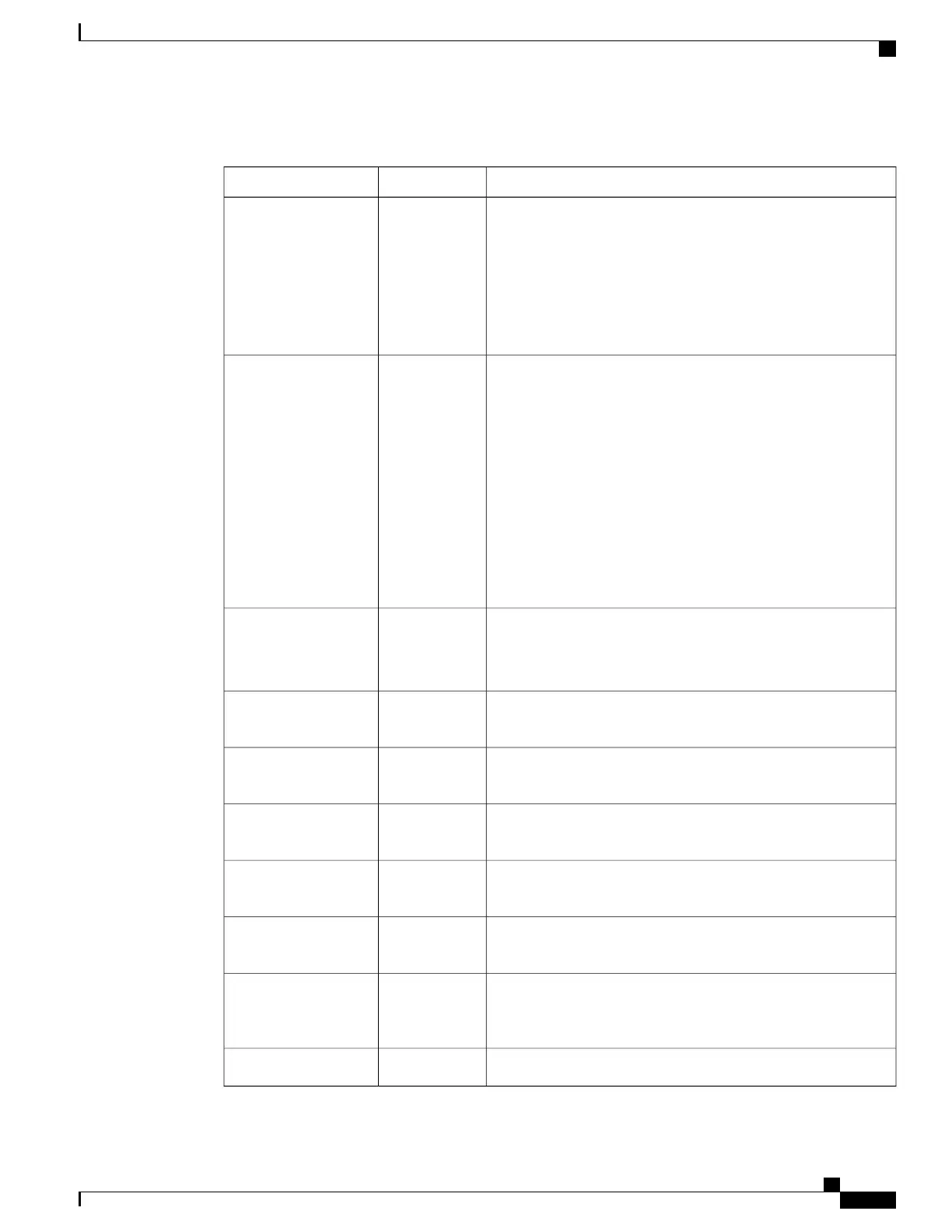Table 14: IPv6 Setup Menu Options
DescriptionDefault valueOption
Indicates the method that the phone uses to get the IPv6-only
address.
When DHCPv6 is enabled, the phone gets the IPv6 address either
from DHCPv6 server or from SLAAC by RA sent by the
IPv6-enabled router. And if DHCPv6 is disabled, the phone will
not have any stateful (from DHCPv6 server) or stateless (from
SLAAC) IPv6 address.
YesDHCPv6 Enabled
Displays the current IPv6-only address of the phone or allows the
user to enter a new IPv6 address.
Two address formats are supported:
•
Eight sets of hexadecimal digits separated by colons
X:X:X:X:X:X:X:X
•
Compressed format to collapse a single run of consecutive
zero groups into a single group represented by a double
colon.
If the IP address is assigned with this option, you must also assign
the IPv6 prefix length and the default router.
::IPv6 Address
Displays the current prefix length for the subnet or allows the
user to enter a new prefix length.
The subnet prefix length is a decimal value from 1-128.
0IPv6 Prefix Length
Displays the default router used by the phone or allows the user
to enter a new IPv6-only default router.
::IPv6 Default Router
Displays the primary DNSv6 server used by the phone or allows
the user to enter a new server.
::IPv6 DNS Server 1
Displays the secondary DNSv6 server used by the phone or allows
the user to set a new secondary DNSv6 server.
::IPv6 DNS Server 2
Allows the user to enable the use of an alternate (secondary) IPv6
TFTP server.
NoIPv6 Alternate TFTP
Displays the primary IPv6 TFTP server used by the phone or
allows the user to set a new primary TFTP server.
::IPv6 TFTP Server 1
(Optional) Displays the secondary IPv6 TFTP server used if the
primary IPv6 TFTP server is unavailable or allows the user to set
a new secondary TFTP server.
::IPv6 TFTP Server 2
Allows the user to release IPv6-related information.NoIPv6 Address Released
Cisco IP Phone 8800 Series Administration Guide for Cisco Unified Communications Manager
57
Configure Network Settings
